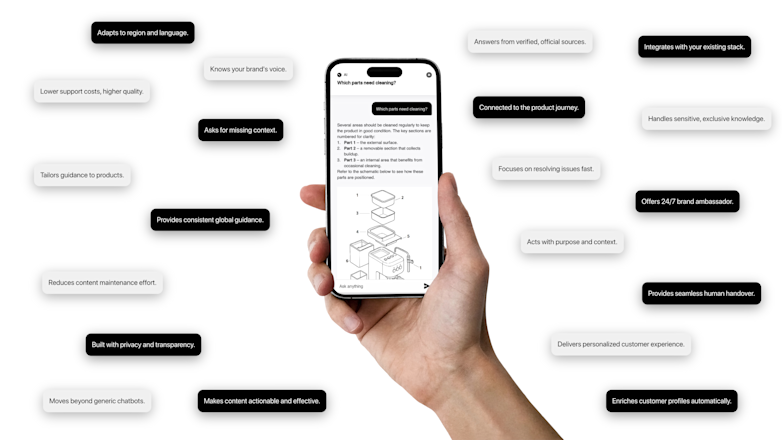
Early this year we decided to initiate a global survey. The aim was to provide some additional insights on how consumers experience the printed product manuals.
Many surveys have already worked extensively with this topic and the vaste concensus is: Consumers don't benefit from the provided product manual. We have studied these findings in great detail and have been able to extract tremendous amount of useful data. On the other hand, as we very focused on getting even more granular data about consumers wishes, excpectations and experiences, we have decided move forward with our own data gathering to further solidify our emperical base.
One of the things we focused a lot on in the survey, is making sure that we did not end up with a biased or very segmented group of respondents. We, therefore, decided to look for respondents that resemble the general consumer population (gender and age). At the same time we aimed at respondants with diverse purchasing patterns. As evident to chart 1, we believe that our respondents represent the addressable consumer base.

Product manual usage
Our underlying assumption was already well established by many other survey publications. The average consumer was confronted with a high cognitive effort task when using the product manual. In return, this resulted in misreading, no reading of product instructions, or misuse of the product. Also, our findings confirm this assumption.
46% never read the product manual before using their device
39% never use the product manual for product onboarding purposes
76% are mis-using or not using the product completely due to lack of know-how
92% don't read the product warranty declaration
The above results are not surprising. Based on our random test we did during 2017 we found a large number of product manuals that were unhelpful. Some of which were never used by our sample group of people.
The top-line problems
If we dig a bit deeper into the data, it becomes more and more clear that the broader issues with product manuals do not come from the lack of need. Instead, it is driven by the continuous lack of clear and easily accessible information and value-added benefits.
54% don't find the product manual helpful
35% never get their needs covered when troubleshooting
40% don't use the product manual. Instead, they use other sources that are easier accessible on demand
It's evident that the product manual lacks effectiveness. What we have learned is that consumers tend not to utilize them before start using the purchased product. Moreover, it is also evident in the presented data above that consumers are not willing to go through the hassle of reading the manual as the way information or knowledge is handed over is not packaged and presented accordingly to their needs.
Enough with yammering for this time. We have tons of data to support the above results further. As we go through our analysis, we will keep on sharing. For now, it's more clear than ever that it's wise to start thinking about new ways of onboarding and introducing your product to your customers as the status-quo product manual might very well fall short
Learn how to collect valuable insights on your customers to sell even more.

How to Turn a New Obligation into a Growth with Layerise

A trusted, brand-safe AI assistant that knows your products, your customers and your content.


